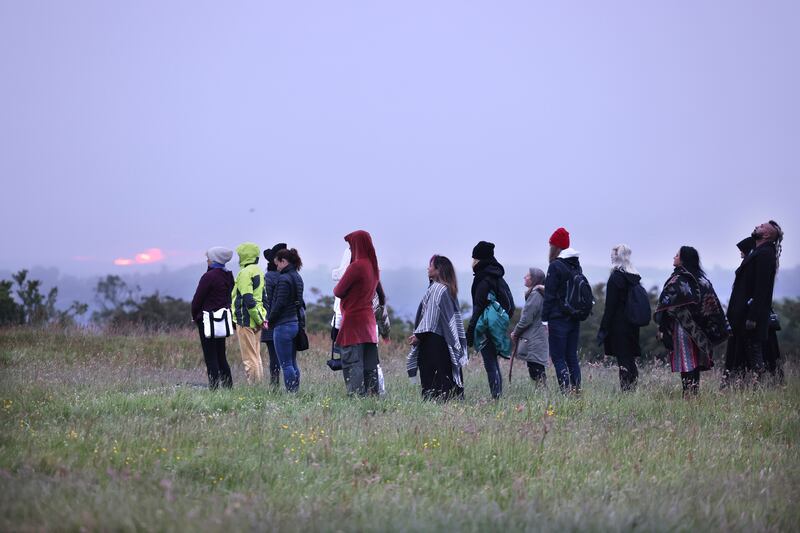From Drombeg stone circle in Co Cork, to the Hill of Tara in Meath and Grianán of Aileach in Co Donegal, the longest day of the year cast its shadow on Tuesday from ancient stones across Ireland.
Celebrated in Ireland for at least 5,000 years, the sun reaches its highest point in the sky over the northern hemisphere during the solstice on June 21st.
While some re-enact bygone pagan rituals dedicated to the sun and its power over the growing season, others simply gather to witness as the year turns back on itself and the days grow shorter again.

The sun rose at 5.05am and will set at 10.01pm.
READ MORE
Yesterday evening, in the shadow of the famous passage tomb of Knowth, saw the launch of the final volume of a publication series on the archaeological excavation of the site.
The Royal Irish Academy’s Knowth Excavation Series - Volume 7 was launched by the Minister of State for Heritage and Electoral Reform, Malcolm Noonan at the Knowth Visitor Centre.
Knowth is one of the three passage tombs that form the core of the Brú na Bóinne World Heritage Property in County Meath, the other two being Newgrange and Dowth.
Archaeological excavations at Knowth, under the direction of the late George Eogan, MRIA, then at the Department of Irish archaeology in TCD and later Professor of Celtic Archaeology in UCD, commenced in 1962 and continued seasonally until 2000.
This final volume, by Professor George Eogan and under the archaeological editorship of Professor Elizabeth Shee-Twohig, deals with the megalithic art of the tombs- the Knowth art, carved c. 3,200BC when the tomb was built, is the largest concentration of such art anywhere in Europe, and is dominated by the remarkable decoration of the kerbstones.
Professor Eogan passed away last November, aged 91. His wife Fiona and family were in attendance at Knowth yesterday evening.
Meteorologically speaking, the solstice is rarely the warmest time of the year in Ireland, said Met Éireann’s Linda Hughes. That is July and August, so there is much to look forward to yet.
“For the next few days, temperatures should be staying fairly good across the South East, up to 21C and 22C again on Wednesday. Again it will be cooler in the North West, more like 16 or 17 degrees,” said Ms Hughes.
“On Thursday there will be another increase in temperatures, again Leinster, and probably east Munster, seeing the best values and expected to be quite warm at 22 or 23 degrees.”
While “very little rainfall” is expected between Tuesday and Friday, days should generally begin cloudy – with some patchy mizzle – and improve with sunshine through the afternoons into the evenings.
“I’m afraid that is the end of quiet weather,” warned Ms Hughes, who expects a low pressure system coming towards Ireland on Friday to threaten more unsettled conditions into the weekend “rotating and pulling in spells of rain and showers”. Some could be quite heavy.
While most parts of Ireland should get temperatures between 15 and 20 degrees on Friday itself, the remainder of the weekend is to be much cooler, especially in the west and southwest.
While the sun will set earlier from here on in, sunrise in the immediate mornings ahead will not be later. Dates of the earliest sunrise and latest sunset are not exactly in June. The later sunrises will follow in a few days.













